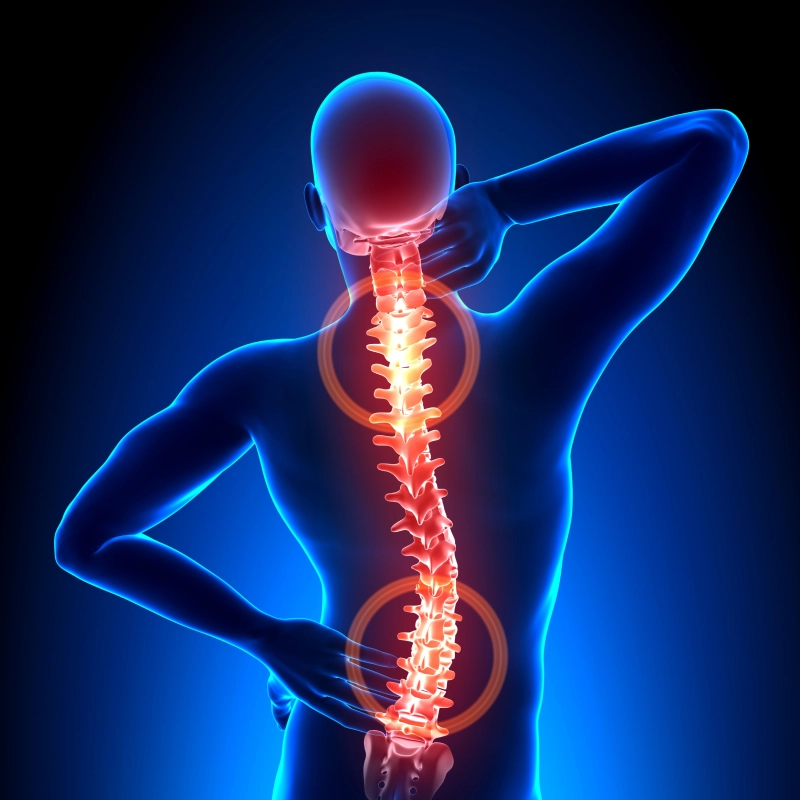
Scoliosis is a lateral curvature of the spine, contrasting with the natural forward and backward curves of your back. Although it is commonly mild and asymptomatic, it can result in back pain and irregular posture. This condition is frequently identified during adolescence. Treatment options vary and may involve physical therapy, wearing a brace, or, in severe cases, surgery to correct the curvature and manage symptoms.
What is Scoliosis?
Scoliosis is an unusual lateral curvature of the spine. Normally, your spine has a gentle curve forward and backward. In scoliosis, however, the spine bends sideways into a C or S shape.
Many instances of scoliosis are mild, asymptomatic, and require no treatment. However, severe cases can lead to uneven posture and pain. Treatment options may include wearing a brace or undergoing surgery.
Types of Scoliosis
- Idiopathic Scoliosis: The most common type, with no identifiable cause. It is subdivided into infantile, juvenile, adolescent, and adult, based on the age of onset.
- Congenital Scoliosis: Caused by spinal abnormalities present at birth.
- Neuromuscular Scoliosis: Associated with neuromuscular conditions like cerebral palsy or muscular dystrophy.
- Degenerative Scoliosis: Occurs in adults due to the degeneration of spinal discs and joints.
- Syndromic Scoliosis: Associated with syndromes such as Marfan syndrome or Rett syndrome.
Symptoms
- Visible curvature of the spine
- Uneven shoulders or hips
- Prominent ribs on one side
- Asymmetrical waist
- Back pain
- Limited mobility
Signs
Signs of scoliosis can include:
- Asymmetrical Shoulders: One shoulder may be higher than the other.
- Protruding Shoulder Blades: One or both shoulder blades may stick out more prominently.
- Misaligned Head: The head may not align properly above the pelvis.
- Uneven Waist: The waist may appear uneven or asymmetrical.
- Elevated Hips: One hip may be higher or more pronounced than the other.
- Consistent Leaning: Leaning to one side of the body.
- Varied Leg Length: Apparent difference in the length of the legs.
- Skin Changes: Unusual skin features such as dimples, patches of hair, or discoloration along the spine.
Causes
Here are some common causes and contributing factors of scoliosis:
- Idiopathic Scoliosis: The most common type, especially in adolescents, with an unknown exact cause. It often runs in families, suggesting a genetic link.
- Congenital Scoliosis: Caused by spine malformations that occur during fetal development.
- Neuromuscular Scoliosis: Linked to conditions like cerebral palsy and muscular dystrophy that affect muscle balance and spine support.
- Degenerative Scoliosis: Occurs in older adults due to the wear and tear of spinal discs and joints, often related to arthritis.
- Functional Scoliosis: Temporary and caused by issues like having one leg shorter than the other or muscle spasms.
- Syndromic Scoliosis: Associated with syndromes and genetic conditions like Marfan syndrome and Ehlers-Danlos syndrome.
- Injury or Infection: Severe spine injuries or infections can lead to scoliosis.
Complications
Severe scoliosis can lead to various complications, including:
- Chronic Pain: Persistent back pain in adulthood.
- Respiratory Issues: Severe curves can restrict lung function.
- Cardiovascular Problems: In rare cases, it can affect heart function.
- Emotional Impact: Self-esteem and body image issues, particularly in adolescents.
Diagnosis
Diagnosing scoliosis typically involves:
- Physical Examination: Checking for spine curvature, shoulder height, and waist symmetry.
- Imaging Tests: X-rays, MRIs, and CT scans to determine the severity and precise location of the curvature.
- Scoliometer: A device to measure the angle of trunk rotation.
Treatment
The treatment of scoliosis depends on the severity and progression of the condition:
- Observation: Regular monitoring for mild cases, especially in growing children.
- Bracing: Used in moderate cases to prevent further curvature during growth.
- Physical Therapy: Exercises to improve posture, flexibility, and strength.
- Surgery: Reserved for severe cases. The most common procedure is spinal fusion, where vertebrae are fused to prevent further curvature.
Prevention
While scoliosis cannot always be prevented, some steps can help reduce the risk or manage the condition more effectively:
- Regular Check-Ups: Routine spine screenings during childhood.
- Exercise: Maintaining good posture and muscle strength through physical activity.
- Awareness: Educating parents and caregivers about the early signs of scoliosis.
Conclusion
Scoliosis is a complex condition that requires a comprehensive understanding for effective management. Early detection and appropriate treatment are crucial in preventing the progression of the curvature and minimizing complications. By staying informed about the types, symptoms, causes, and treatment options, individuals and families can better navigate the challenges posed by scoliosis. Regular medical check-ups and an active lifestyle can also contribute to better outcomes and an improved quality of life for those affected by this condition.

